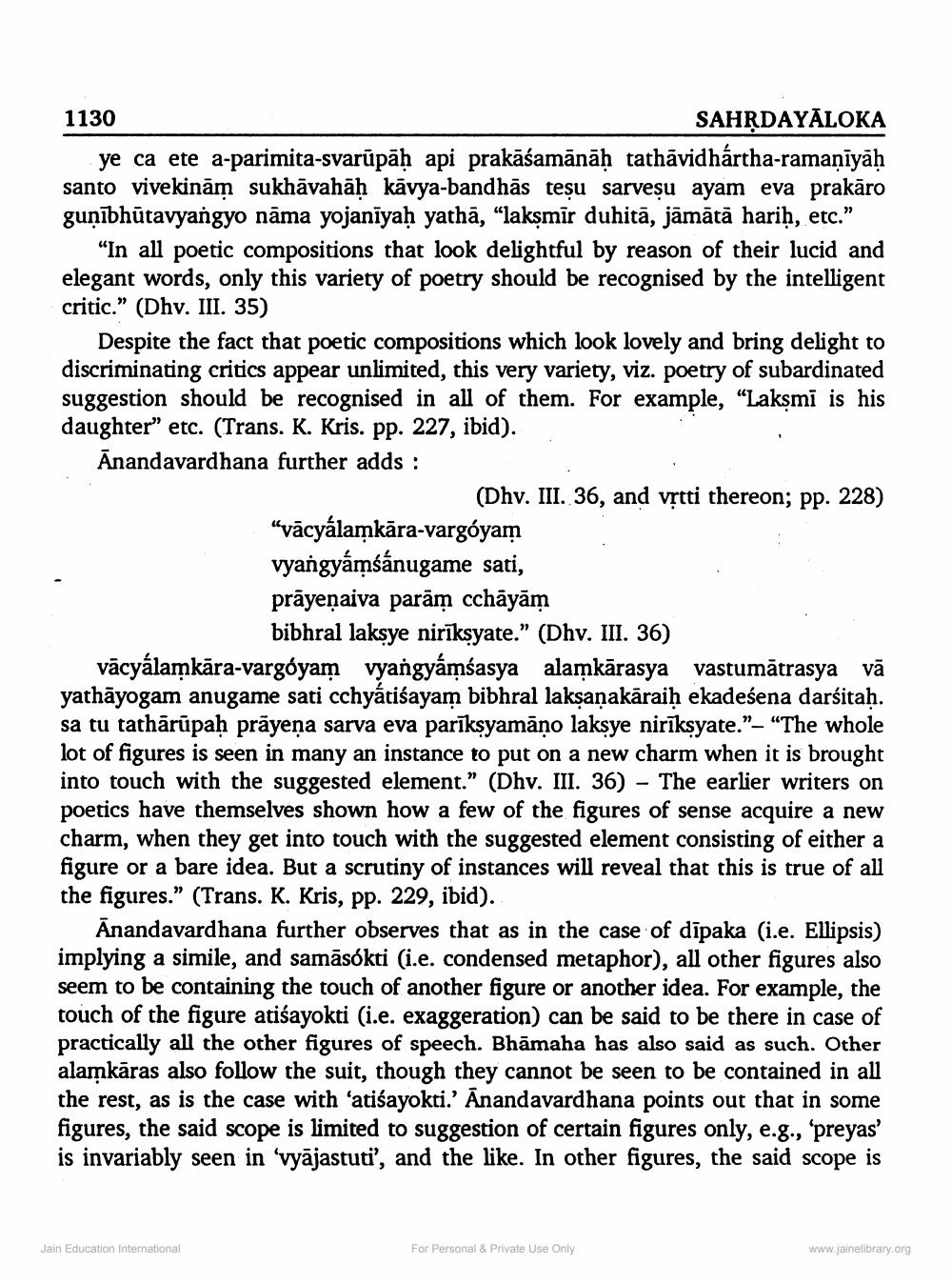________________
1130
SAHRDAYĀLOKA ye ca ete a-parimita-svarūpāḥ api prakāśamānāḥ tathāvidhartha-ramanīyāḥ santo vivekinām sukhāvahāh kävya-bandhās tesu sarvesu ayam eva prakāro gunībhūtavyangyo nāma yojanīyaḥ yathā, “lakṣmīr duhitā, jāmātā hariḥ, etc."
"In all poetic compositions that look delightful by reason of their lucid and elegant words, only this variety of poetry should be recognised by the intelligent critic.” (Dhv. III. 35)
Despite the fact that poetic compositions which look lovely and bring delight to discriminating critics appear unlimited, this very variety, viz. poetry of subardinated suggestion should be recognised in all of them. For e
"Laksmi is his daughter" etc. (Trans. K. Kris. pp. 227, ibid). Anandavardhana further adds :
(Dhv. III. 36, and vrtti thereon; pp. 228) “vācyálamkāra-vargóyam vyangyámśánugame sati, prāyeņaiva parām cchāyām
bibhral laksye nirīksyate.” (Dhv. III. 36) vācyálamkāra-vargóyam vyangyámíasya alamkārasya vastumātrasya vā yathāyogam anugame sati cchyátiśayam bibhral lakṣaṇakāraih ekadeśena darśitaḥ. sa tu tathārūpaḥ prāyeņa sarva eva parīksyamāņo laksye nirīksyate.” – “The whole
seen in many an instance to put on a new charm when it is brought into touch with the suggested element." (Dhv. III. 36) - The earlier writers on poetics have themselves shown how a few of the figures of sense acquire a new charm, when they get into touch with the suggested element consisting of either a figure or a bare idea. But a scrutiny of instances will reveal that this is true of all the figures." (Trans. K. Kris, pp. 229, ibid).
Anandavardhana further observes that as in the case of dīpaka (i.e. Ellipsis) implying a simile, and samāsókti (i.e. condensed metaphor), all other figures also seem to be containing the touch of another figure or another idea. For example, the touch of the figure atiśayokti (i.e. exaggeration) can be said to be there in case of practically all the other figures of speech. Bhāmaha has also said as such. Other alamkāras also follow the suit, though they cannot be seen to be contained in all the rest, as is the case with 'atiśayokti.' Anandavardhana points out that in some figures, the said scope is limited to suggestion of certain figures only, e.g., 'preyas' is invariably seen in 'vyājastuti', and the like. In other figures, the said scope is
Jain Education International
For Personal & Private Use Only
www.jainelibrary.org




